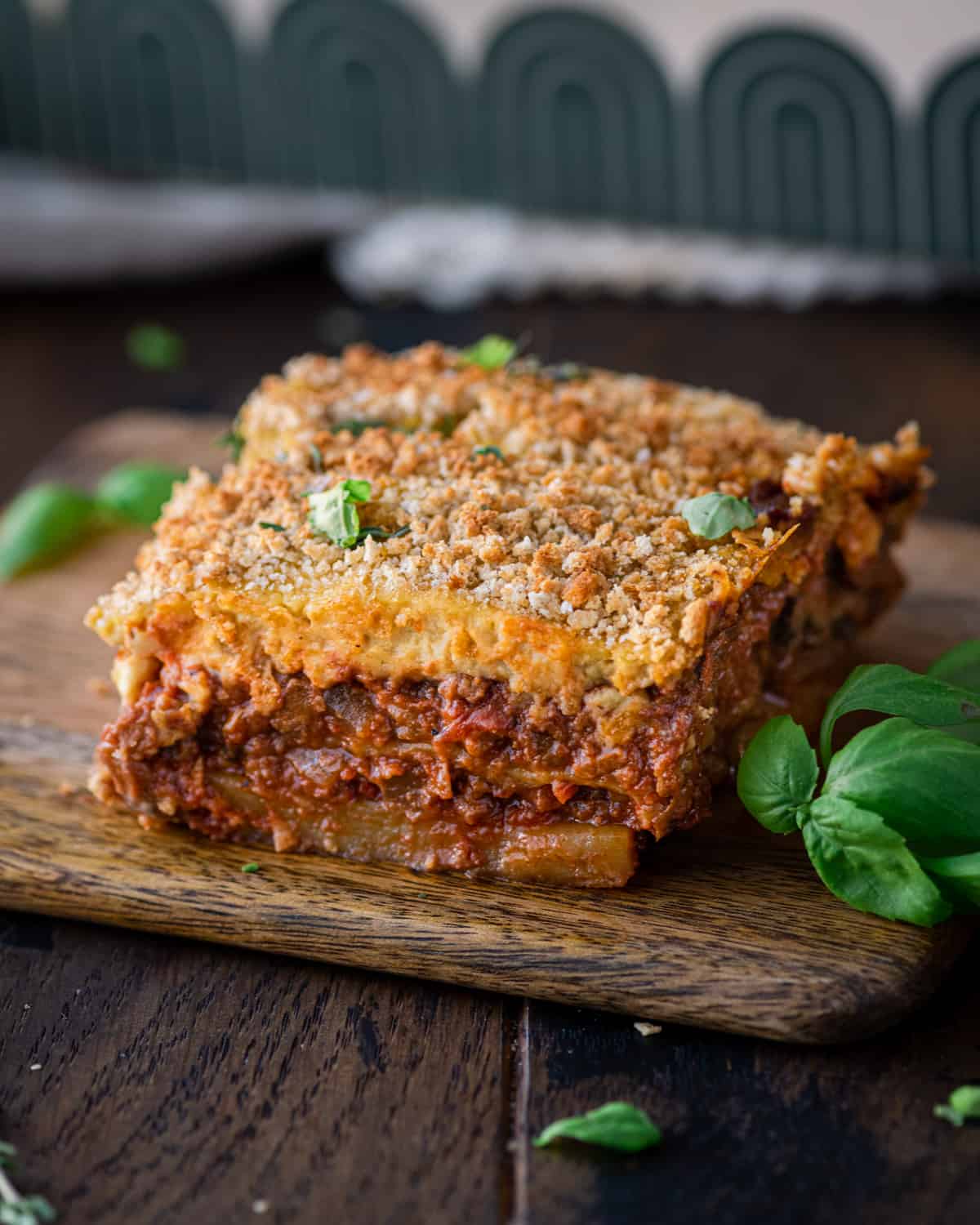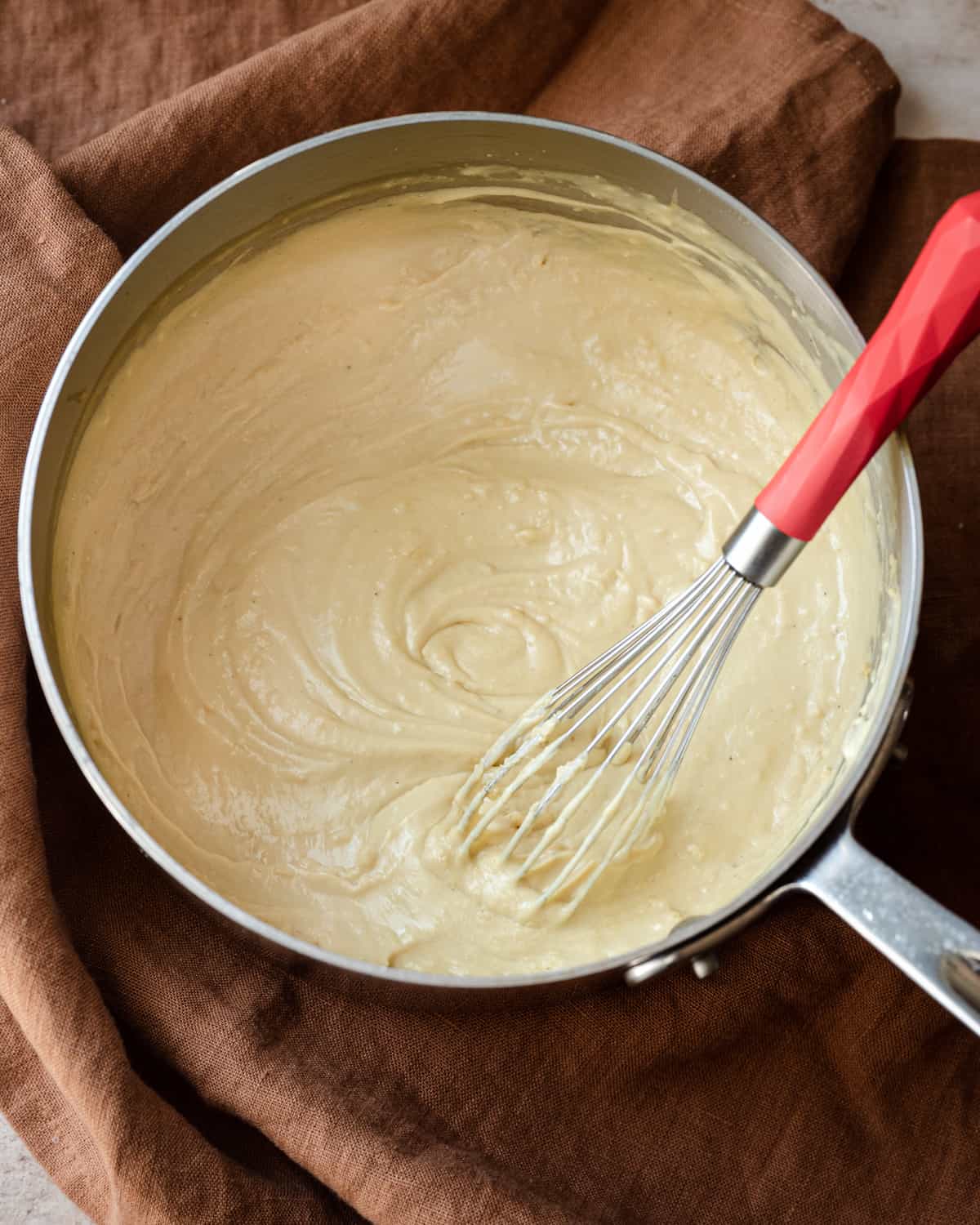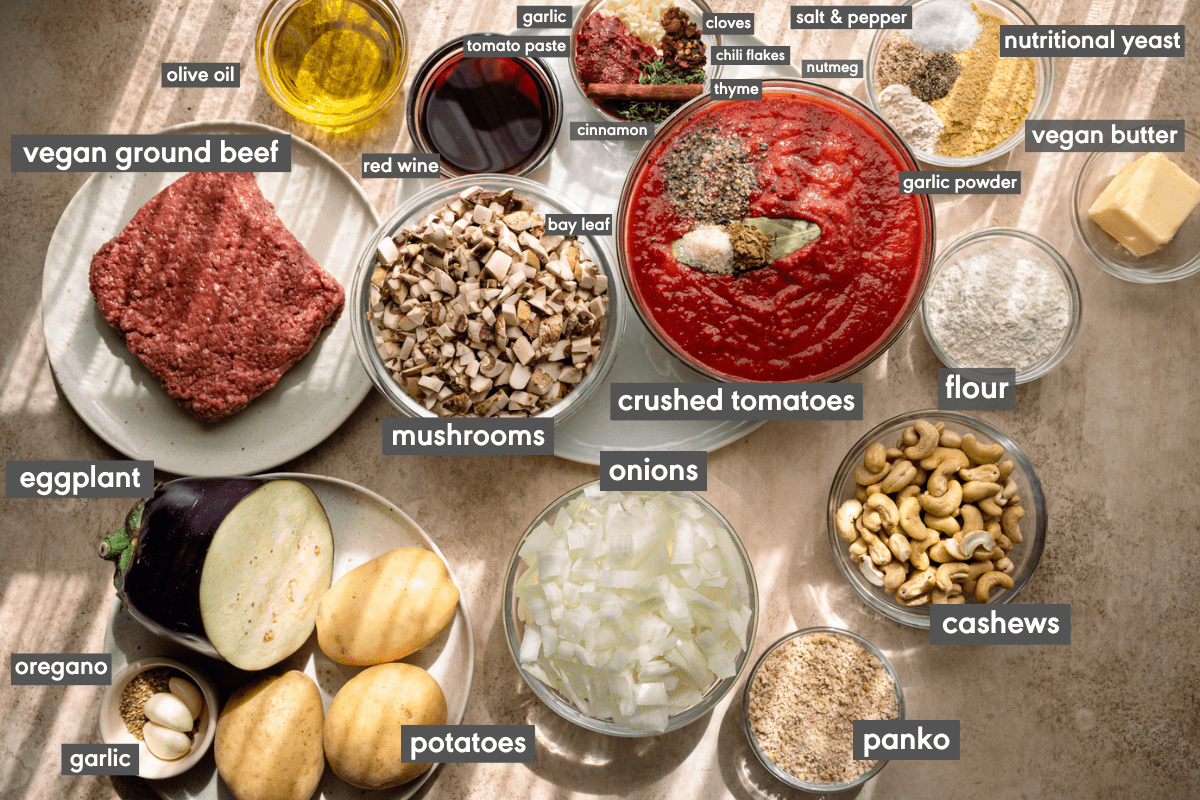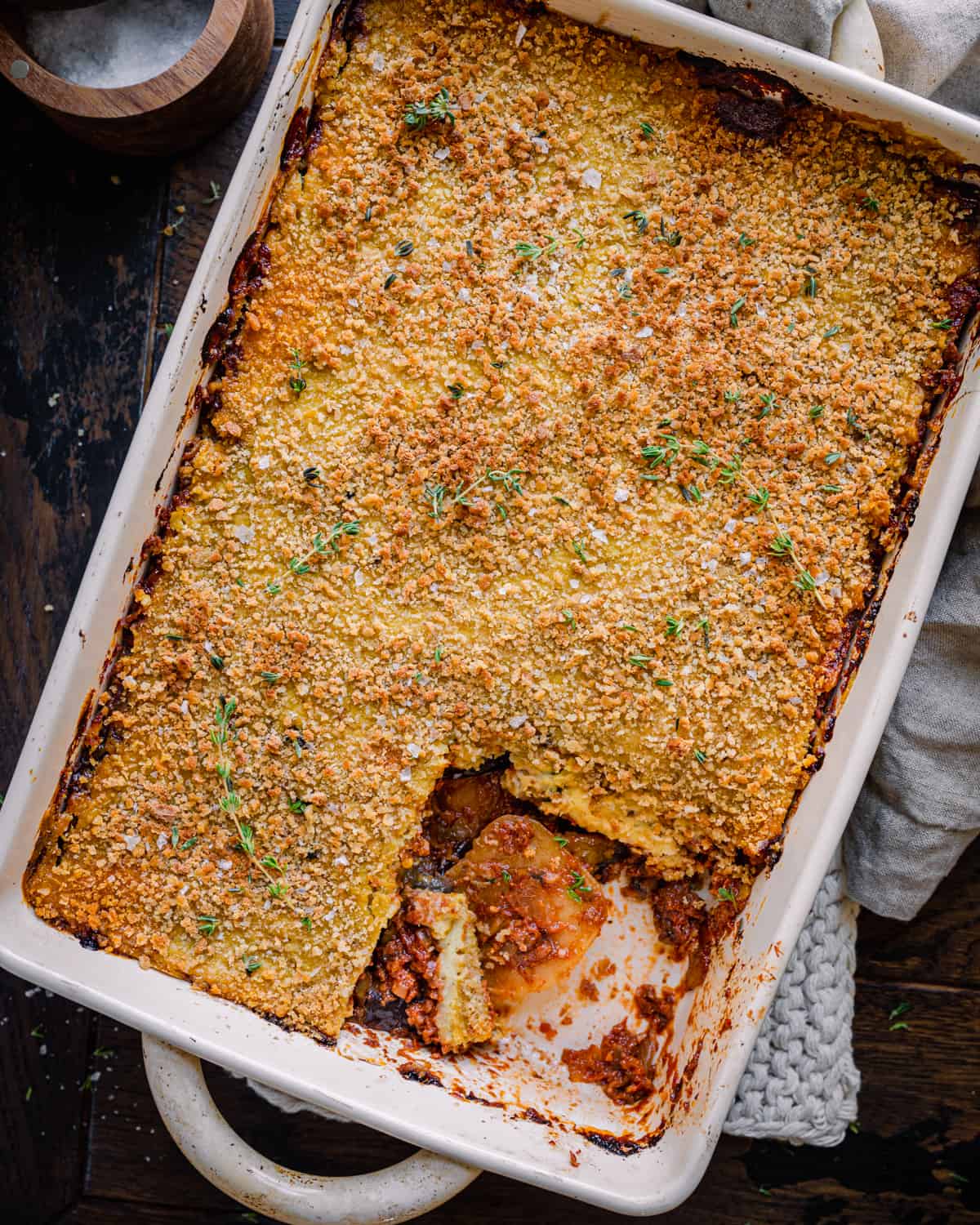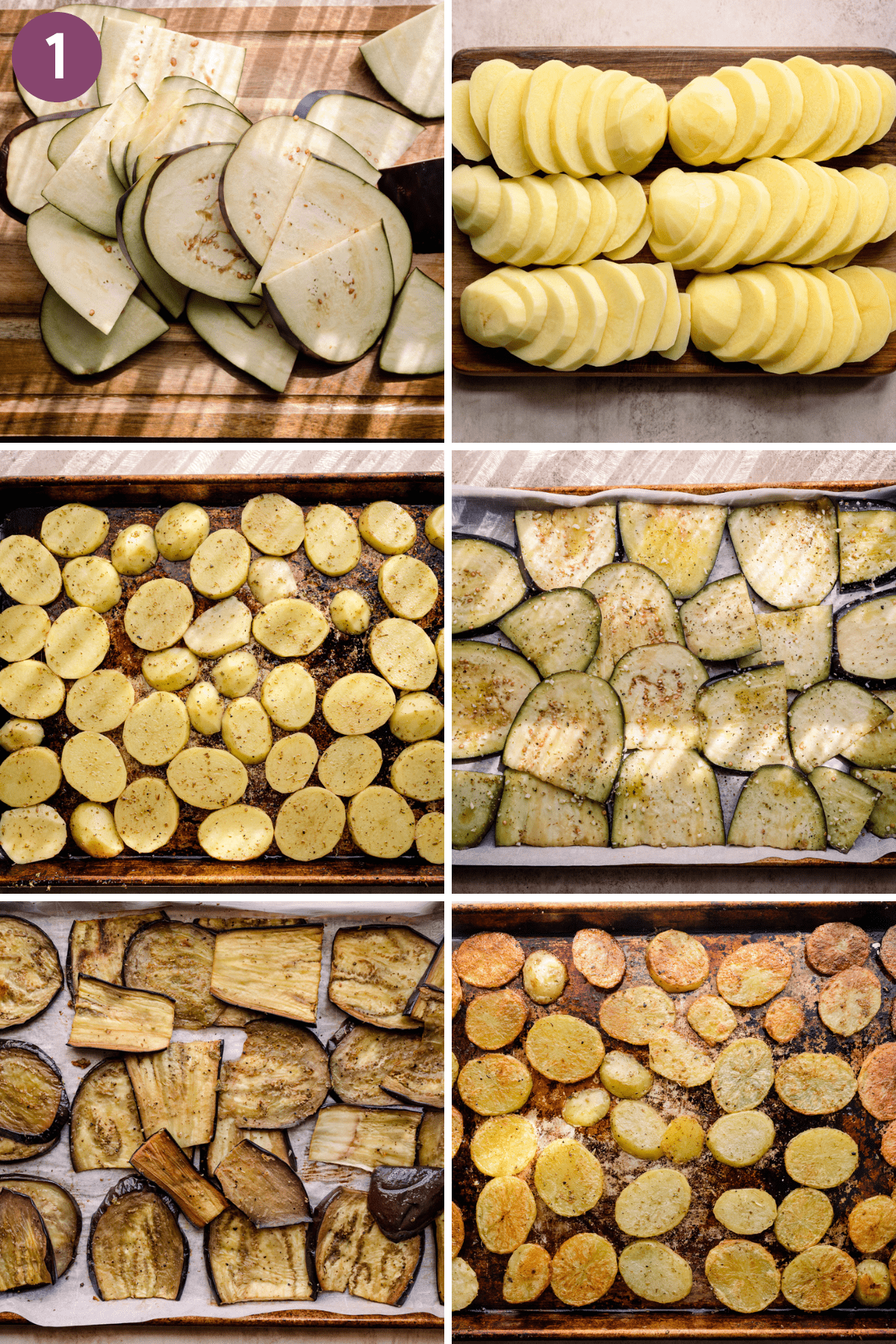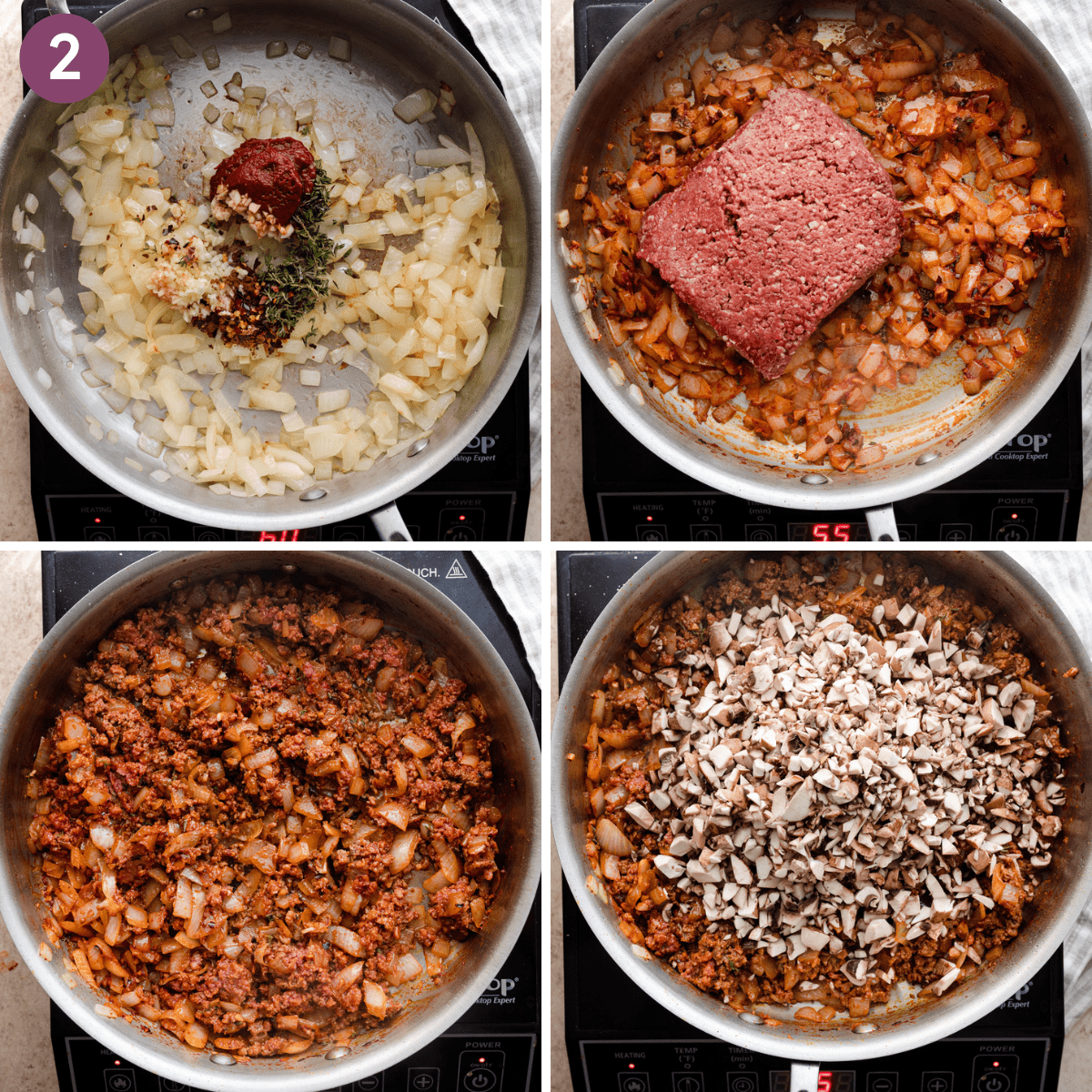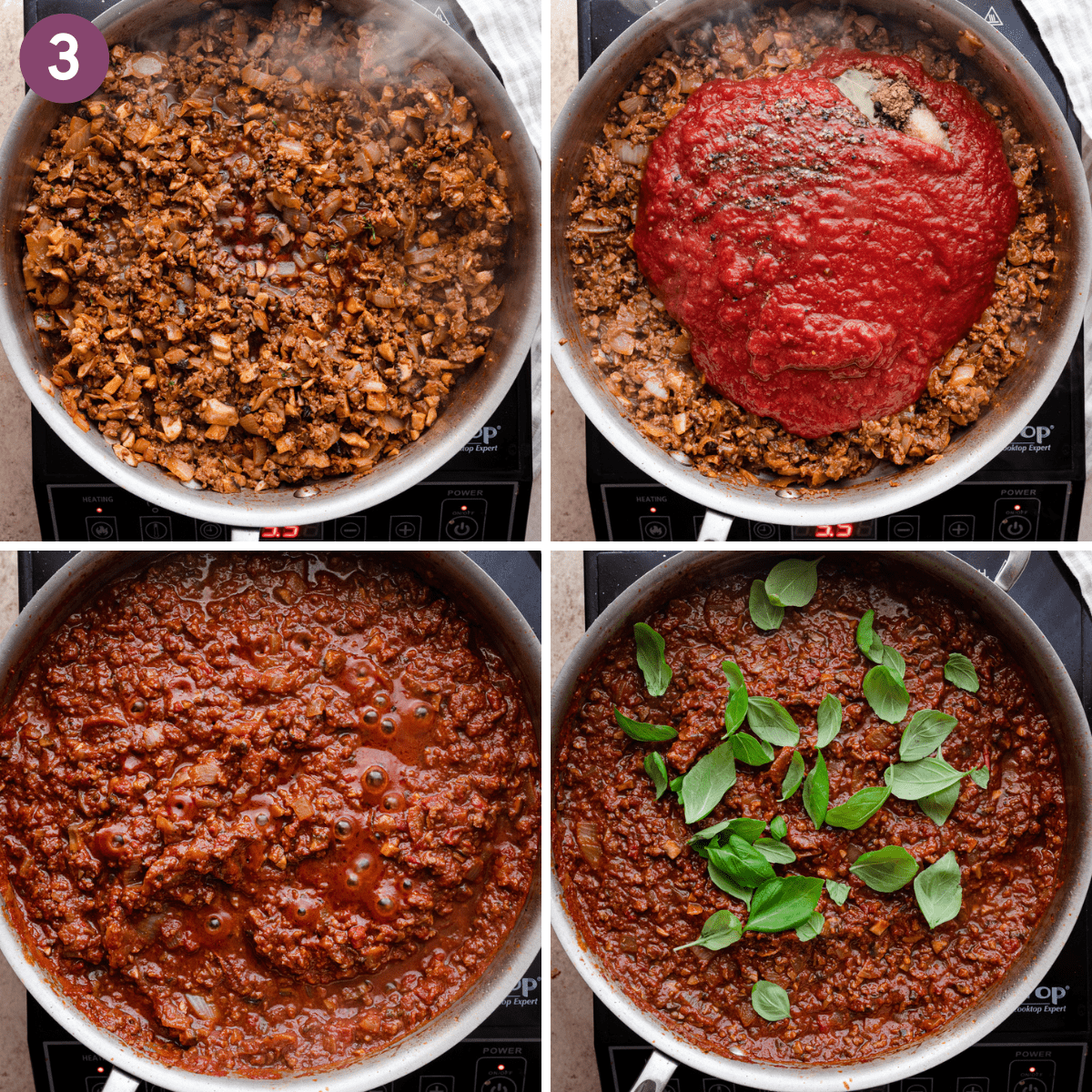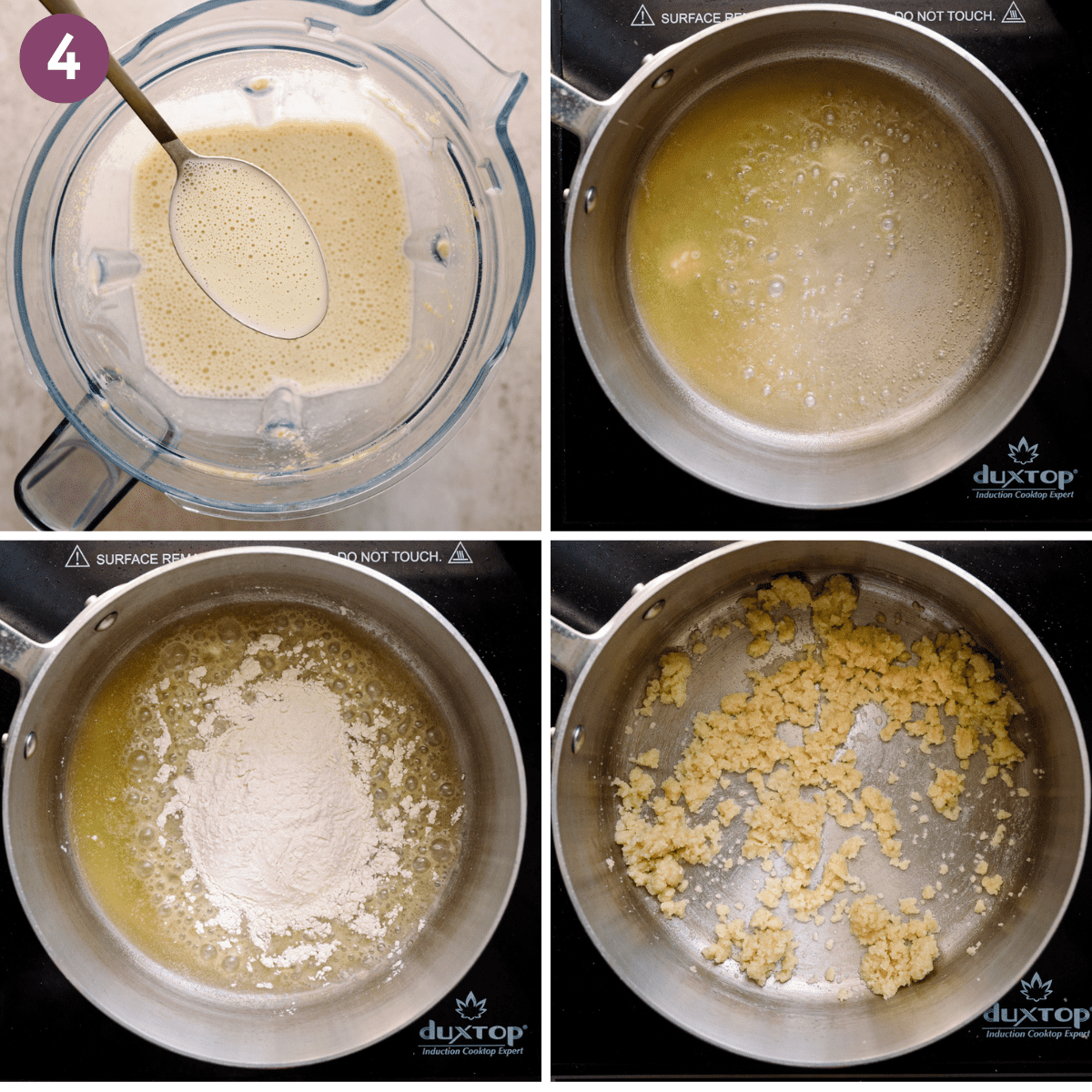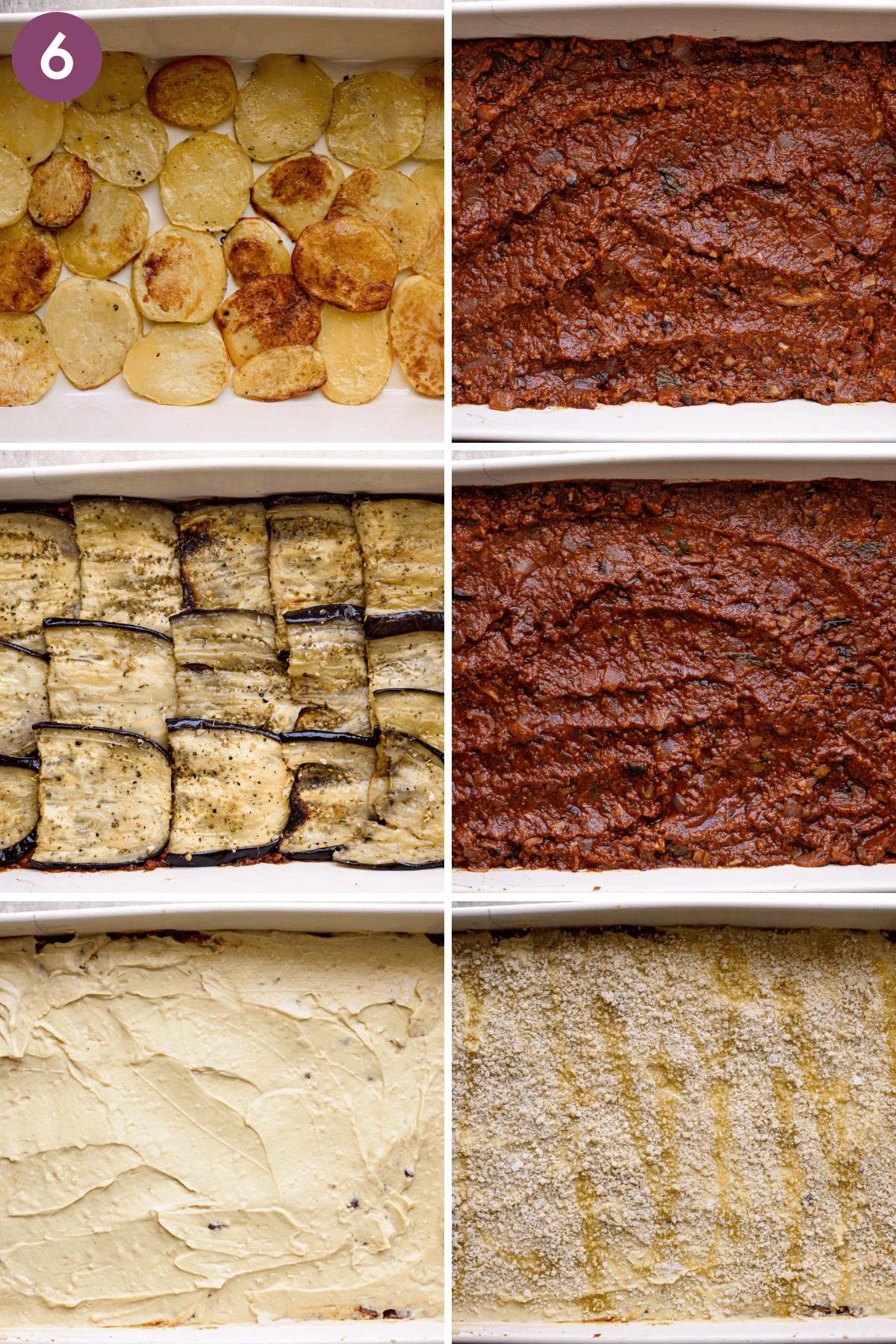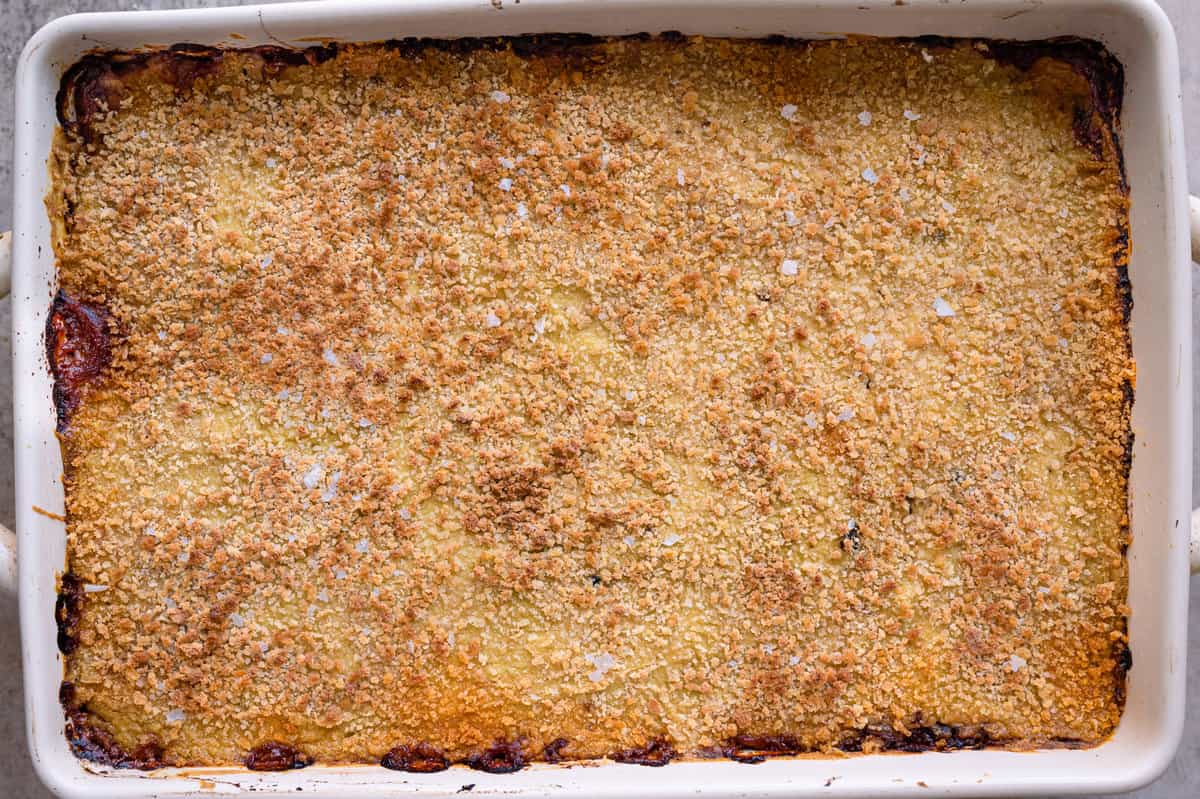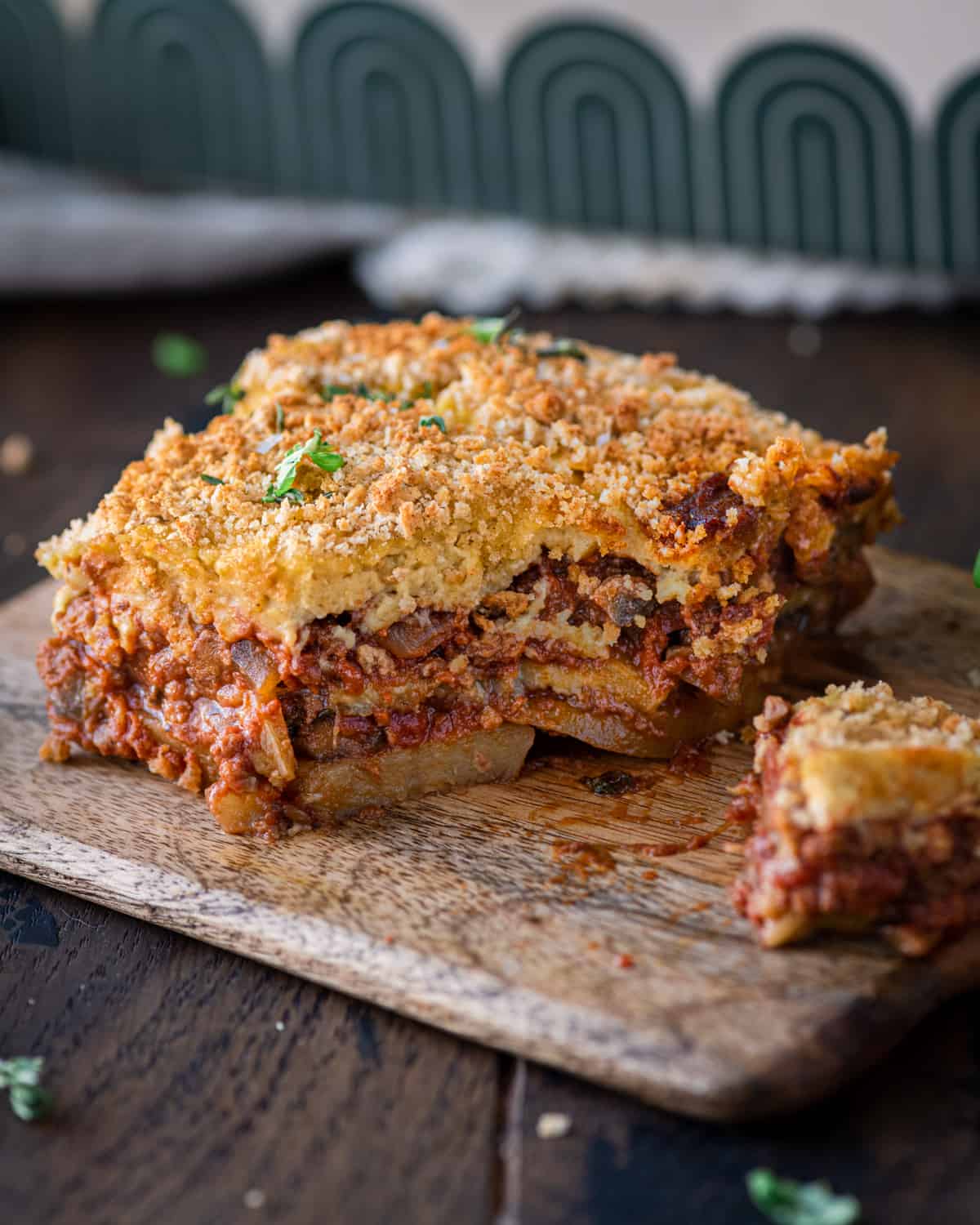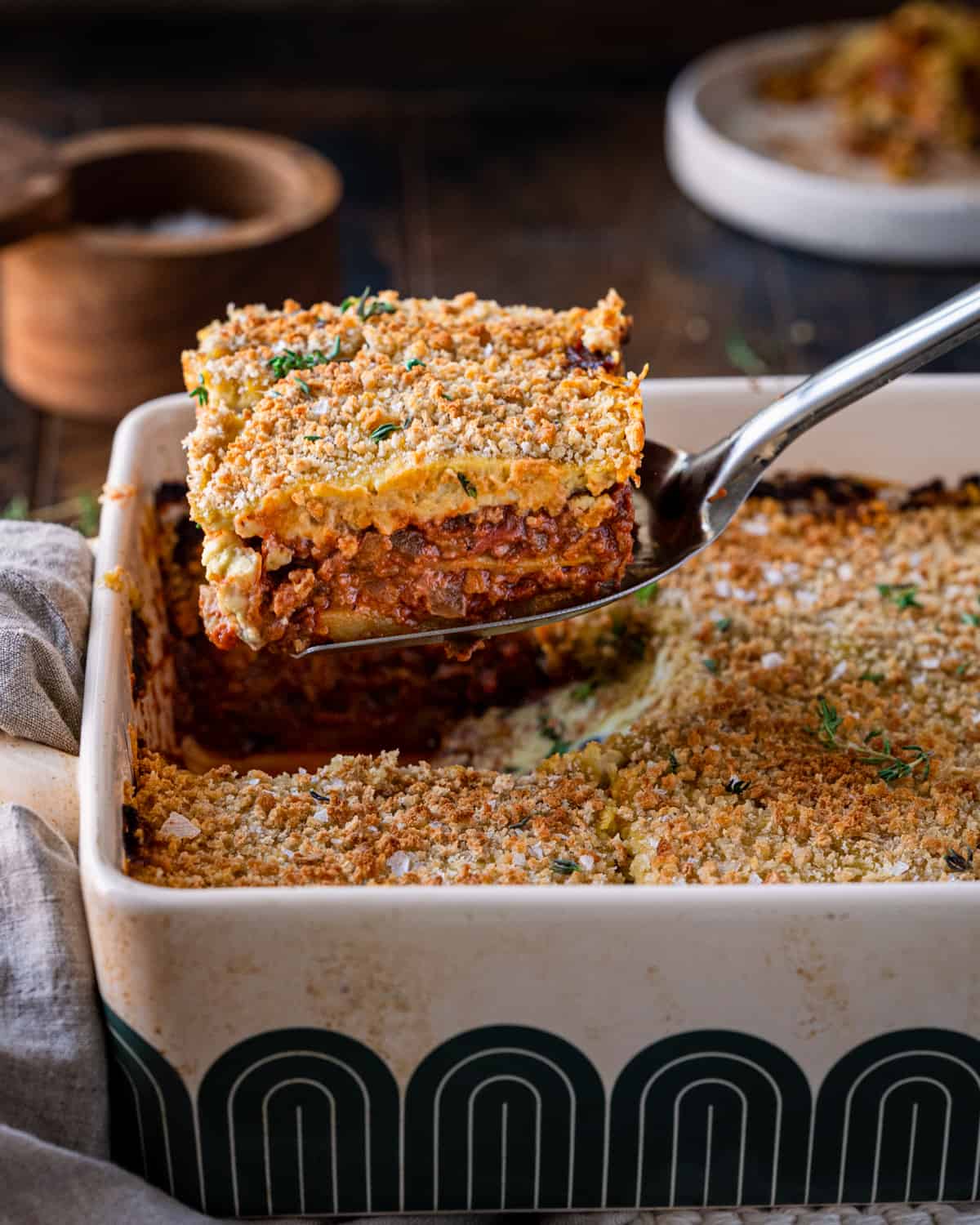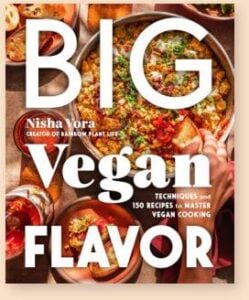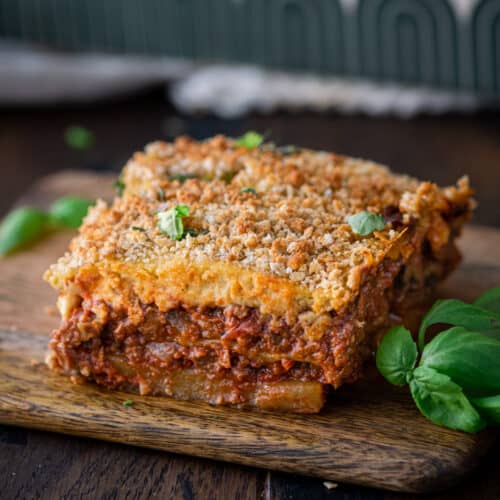It’s an impressive comfort food classic from Greece, made with layers of roasted potatoes and eggplant, a spiced vegan meat sauce, and a creamy vegan bechamel, all baked in the oven into a creamy casserole. Trust me when I say it’s outrageously good. This vegan version is just as indulgent as the meat-and-dairy heavy classic but won’t weigh you down. If you’re used to serving an extravagant Vegan Lasagna for special occasions and holidays, consider swapping it for this vegan Greek moussaka instead!
What is moussaka?
Moussaka is a popular and indulgent Greek casserole. Some folks refer to it as a Greek lasagna, but with eggplant instead of pasta. It’s one of the most popular dishes from Greece, and a staple on most Greek restaurant menus. The first time I tried it was at Pylos, a family-owned Greek restaurant and my favorite NYC spot before I became vegan. I remember thinking, “so this is what heaven tastes like”. We ordered that dish every time we visited. A traditional moussaka has three main components:(1) Layers of fried eggplant and, sometimes, potatoes; (2) A rich meat and tomato sauce with hints of spice:(3) A thick and creamy bechamel sauce on top.
Why this recipe works
Incredible comfort food without the meat or dairy.
One bite of this vegan moussaka and you’ll be transported to heaven. Layers of meltingly tender eggplant and hearty potatoes are layered with a spiced tomato “meat” sauce, all topped with a thick layer of a creamy, savory bechamel sauce that thickens during baking into a cheesy crust.
Perfectly cooked eggplant and potatoes.
Thanks to a couple techniques and the right oven temperature, you end up with soft, almost jammy eggplant that melts in your mouth and perfectly tender, browned potatoes. While many traditional Greek recipes shallow or deep fry the eggplant and potatoes, I found that roasting them with olive oil in the oven worked fantastic. You can roast potatoes and eggplant at the same time (they both roast for 30 minutes); in contrast, you have to fry them separately, each in two batches, so it takes more time. Plus, moussaka is already rich, so deep frying weighed it down.
A seriously meaty sauce.
The meat sauce in moussaka is similar to a bolognese or a lasagna meat sauce. Adding warm spices like cinnamon, cloves and thyme, however, gives this sauce its defining Greek charm and flavor.
Here, I use vegan ground beef + mushrooms. The vegan meat bringing the intense savoriness, while shrooms enhance those flavors and bulk up the sauce in a wholesome, inexpensive way. While optional, porcini mushroom powder takes the umami factor to the next level (affiliate link).
Note: If you want to make a more wholesome “meat sauce,” check out the second recipe card for my homemade alternative.
And this sauce is versatile! Use it to make a comforting bowl of meaty vegan pasta; or stuff the meat sauce into jumbo shells, pour the bechamel sauce on top, and bake in the oven for an epic baked pasta dish.
A creamy, thick, and savory bechamel sauce.
A moussaka sauce more closely resembles French mornay sauce, a bechamel sauce that’s enriched with Gruyere or Parmesan cheese and egg. It’s like a thick custard, which sets as a top layer on the moussaka after baking. Making vegan bechamel without all this dairy-based richness was no easy feat. In our tests, a vegan bechamel made with standard plant milk wasn’t rich or thick enough, while the common substitute of cashew cream wasn’t flavorful enough. So this recipe uses a hybrid. The sauce starts off like a classic bechamel with a roux: vegan butter and flour. Instead of pouring in plant milk though, I pour in a heavily seasoned savory homemade cashew cream. The end result is perfect: creamy and thick with tons of rich, savory flavor.
Ingredient notes
Eggplant. It isn’t moussaka without the eggplant! I know eggplant isn’t the most loved vegetable (unless, perhaps, you’ve tried my smoky Baingan Bharta recipe) but even the eggplant-haters are sure to love it in this dish. My partner Max, who practically has “I hate eggplant” tattooed on his bum, can’t get enough of this moussaka. The eggplant is thinly sliced and roasted, then baked again inside of the moussaka. It becomes deliciously buttery and tender, practically melting in your mouth. There’s nothing dry or rubbery about this eggplant! Substitute: Feel free to use sliced zucchini or an extra layer of potatoes if you still don’t think this dish will convert you into an eggplant lover. Potatoes. Some traditional moussaka recipes contain a layer of potatoes, some don’t. I tested both, and the version with potatoes always came out on top because the potatoes give the moussaka more structure and heft, and make it easier to slice through. Pro tip: Use a starchy potato, like Yukon Gold, Russet, or Idaho. Vegan ground meat. While whole foods are usually my go-to, I made an exception here and used storebought vegan ground meat by Impossible Burger. It cuts the prep time in a three-layer dish quite a bit, so I think it’s worth it. Substitute: Make a more wholesome alternative at home with lentils, walnuts, and mushrooms. I’ve included a second recipe for “lentil meat sauce” in the recipe card below. Canned crushed tomatoes. Try to use the best-quality canned tomatoes you can find and afford. They’ll help the tomato-rich meat sauce taste its best. Red wine. This enhances the savoriness of the meat sauce and gives it a jammier texture. Barnivore is a helpful resource when you’re searching for a vegan-friendly red wine brand. Substitute: Skip the wine and deglaze the pan with veggie broth + ½ tablespoon red wine vinegar. Raw cashews. Soaked, rinsed, and blended cashews turn into the creamy base we need for the vegan bechamel sauce. Either quick soak them for 15 minutes by boiling them on the stove, or leave them to soak overnight. Nut-free substitute: Make a more traditional bechamel sauce using the Notes in the recipe card. Vegan butter. One of the three ingredients in bechamel sauce is butter, so I use a bit in the sauce here. Substitute: Extra virgin olive oil works just as well. Nutritional yeast. A generous amount of nutritional yeast lends the umami, subtly cheesy flavors that are normally found in a mornay sauce.
Step-by-step instructions
Layer #1: Prep the eggplant and potatoes
Slice the eggplant crosswise in half, then slice each half lengthwise into fairly thin slices. Transfer them to a colander and sprinkle salt on top. Rest for 30 minutes. Peel and slice the potatoes slightly thicker than the eggplant. Toss with oil, oregano, salt and pepper. Transfer to a second sheet pan in a single layer, without overlap. Roast the eggplant and potatoes. Place both pans in the oven. Roast 30 minutes, or until both are tender and lightly browned.
Layer #2: Make the vegan meat sauce.
Add the onion to a hot sauté pan with oil. Cook until soft and golden, then stir in the garlic, cinnamon stick, thyme, cloves, chile flakes, and tomato paste for 2 minutes. Add the vegan ground meat (or homemade meat alternative) and cook for a few minutes until it’s a bit browned. Add in the mushrooms for 2 to 4 minutes. Deglaze with the red wine and scrape up the browned bits on the bottom. Cook for a few minutes, or until the smell of alcohol burns off. Pour in the tomatoes, salt, pepper, bay leaf, and mushroom powder into the pan. Bring it up to a boil, then reduce the heat to a simmer. Cook for 10 minutes until thickened. Discard the bay leaf and cinnamon. Stir in the basil and add a pinch or two of sugar to balance any acidity.
Layer #3: Make the vegan bechamel sauce.
Blend the soaked and rinsed cashews with the water, nutmeg, garlic powder, nutritional yeast, salt, and pepper. You’ll know it’s ready when the sauce is smooth, creamy, and has the same texture as plant milk. Now add the butter to a saucepan. Once melted, whisk in the flour and whisk constantly until a paste forms (the roux). Slowly pour in the cashew cream in stages while continuously whisking to prevent clumps. The finished texture should be very thick and creamy. Once it reaches that point, take the pot off the heat. Pro tip: If you’re making the bechamel sauce ahead of time, transfer it to a container or bowl so it doesn’t harden or overthicken.
Assemble the Moussaka.
Bake the moussaka. Place the dish in a 400ºF/204ºC oven and bake uncovered until the top is a bit browned in spots. You could also pop it under the broiler for a minute to achieve a browner surface. Let the moussaka cool for at least 30 minutes before slicing (or even a few hours). Serve each slice with chopped basil on top and enjoy!
Tips for making the best vegan moussaka
Pre-salt the eggplant. We A/B tested the eggplant: Batch A of the eggplant was salted and rested for 30 minutes; Batch B was not pre-salted. Batch A was way better: it had a creamy and tender texture and great flavor, whereas Batch B had a mushy yet rubbery texture and a bitter flavor. Eggplant needs oil. When we tried using just a little oil on the eggplant, it came out dry and rubbery. The entire dish was unpleasant to eat. So don’t skimp on the oil when it comes to the eggplant (it’s a sponge and it needs to be well coated). Let the moussaka rest! This is so important. I know it will be tempting to devour it asap, but leaving the freshly baked moussaka to rest for at least 30 minutes, ideally an hour or two, will help it set, develop structure, and taste better. Make sure you like the meat! If you’re using store-bought vegan meat in the sauce, please use a brand you know you already like. For instance, while I love Beyond Meat sausages, I don’t like the Beyond Burger meat, and when we tested this recipe with it, it tasted, well, funky. Note: We prefer Impossible Burger in this recipe. Each time we’ve made it, it’s been loved by vegans and non-vegans alike. Make ahead to streamline. There are several steps to making any moussaka, so this is more of a weekend or special occasion dish. But, each layer is easy to make and there are no complicated cooking techniques. If you love this Vegan Moussaka recipe as much as we do, please be sure to leave a rating and review below :) It’s always much appreciated!
Big Vegan Flavor
Techniques and 150 recipes to master vegan cooking.
Big Vegan Flavor
Techniques and 150 recipes to master vegan cooking.
